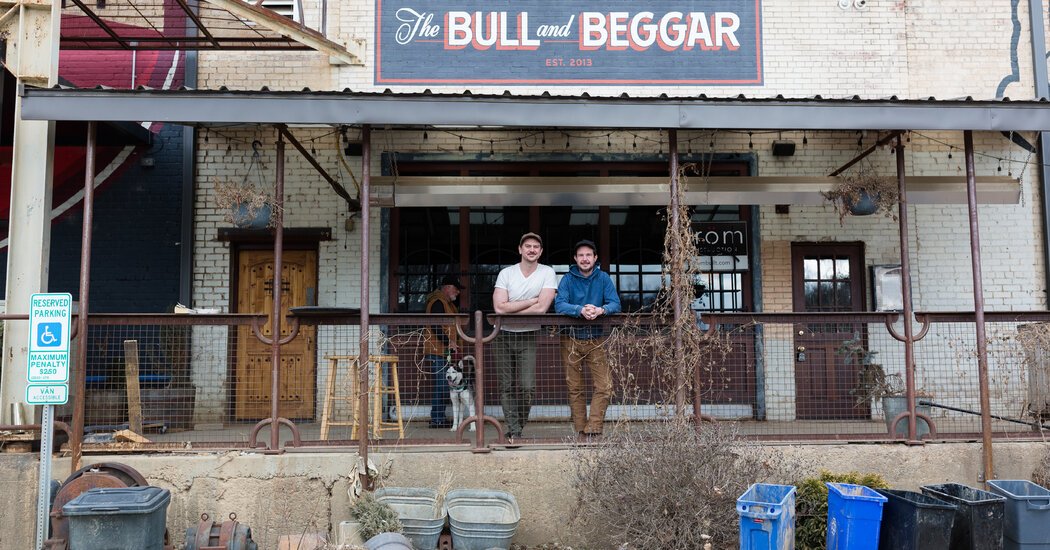While the lights are back on in most of the city’s bars and restaurants, those in the low-lying River Arts District and Biltmore Village neighborhoods are still dark. Bottle Riot, a wine bar next door to the Bull and Beggar, closed permanently, along with El Patio de Guajiro, the four-month-old brick-and-mortar site of a beloved Cuban food truck. Dozens of other trucks, bars, smokehouses, breweries and bakeries are gone. Gourmand, a nearby farm-to-table restaurant — the phrase is almost redundant in Asheville — was knocked off its foundation weeks before it was scheduled to open. The owners now aim to have it up and running next year.
Eda Rhyne, a distillery that flavored its fernet and other spirits with Appalachian forest plants, and Plēb Urban Winery, which fermented grapes from Appalachian vines, were destroyed. So was the pottery studio that made the expressive little ceramic pigs that hold toothpicks on every table at the downtown tapas restaurant Cúrate.
About 90,000 people live in Asheville, but over the past decade or so its food scene has drawn the kind of national spotlight that typically shines on cities that are many times larger. Its farm-to-table restaurants and their chefs — Katie Button of Cúrate, Silver Iocovozzi of Neng Jr’s, John Fleer of Rhubarb, Meherwan Irani of Chai Pani, Ashleigh Shanti of Good Hot Fish and others — are regularly noticed by the James Beard awards, Food & Wine, Bon Appétit, Esquire and The New York Times. For several years its craft breweries won it the title Beer City USA in a drinkers’ poll by examiner.com.
As the eating and drinking scene has grown, so has tourism. Almost 14 million visitors came to the city and surrounding Buncombe County in 2023 — about 154 people for each resident. According to the local Chamber of Commerce, leisure and tourism make up the second-largest business sector in Asheville’s economy, after health care and education.
